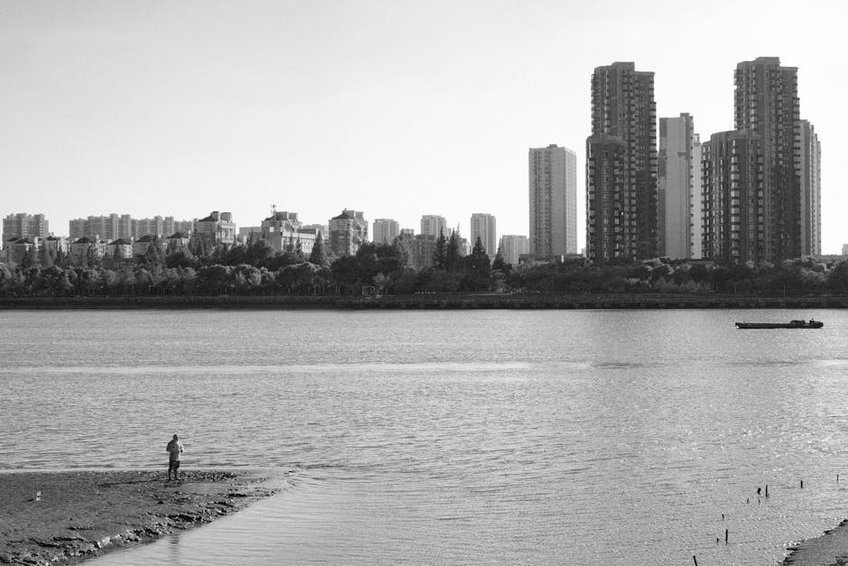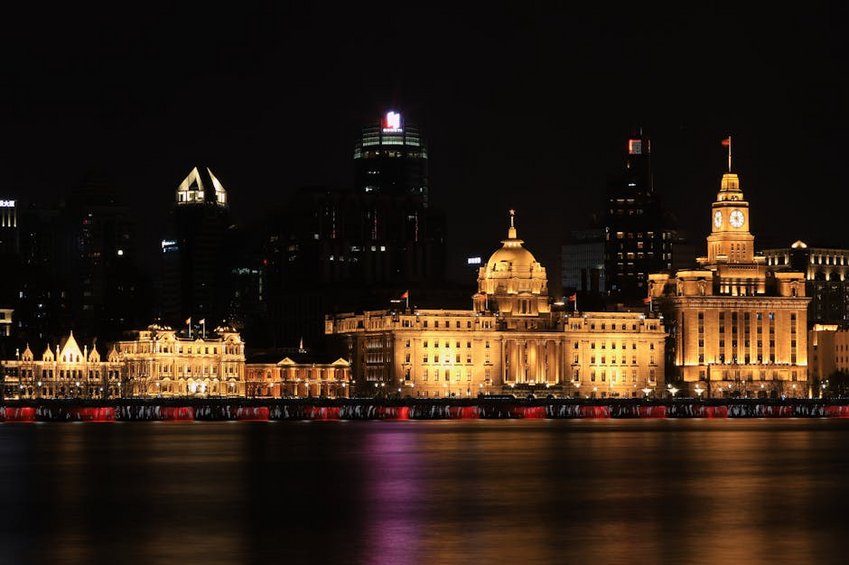Shanghai Bund Waterfront: Your Ultimate Guide to China’s Iconic Riverfront
Standing along the Huangpu River, the Shanghai Bund Waterfront represents one of the most iconic and photographed urban landscapes in all of Asia. This magnificent promenade stretches for about 1.5 kilometers along the western bank of the Huangpu River, offering breathtaking views of futuristic skyscrapers in Pudong across the water while preserving the historical European architecture behind you. The Shanghai Bund Waterfront isn’t just a sightseeing spot—it’s the living, breathing heart of Shanghai where the city’s colonial past meets its hyper-modern future. Whether you visit at sunrise when the area is peacefully quiet, during the day when it buzzes with tourist activity, or at night when both sides of the river explode in a spectacular light show, the Bund delivers an unforgettable experience that captures the essence of China’s most dynamic city. You’ll find yourself walking in the footsteps of merchants, bankers, and adventurers who shaped Shanghai’s history while witnessing the incredible transformation that has made this city a global economic powerhouse.
Shanghai Bund Waterfront Essential Information – What Every Visitor Needs to Know
Before you embark on your journey to the Shanghai Bund Waterfront, understanding its layout, historical significance, and practical details will dramatically enhance your experience. The Bund (Waitan in Chinese) derives its name from the Anglo-Indian word for “embankment” and was originally developed in the 1840s after the First Opium War when Shanghai became a treaty port. This area quickly became the financial and commercial hub of East Asia, with grand buildings housing banks, trading houses, and consulates from around the world. Today, the 52 historical buildings along Zhongshan Road (the street behind the waterfront) represent various architectural styles including Gothic, Baroque, Neoclassical, and Art Deco, creating what is often called “a museum of international architecture.” The waterfront itself features a wide pedestrian promenade that is divided into different levels, with the upper level perfect for strolling and photography, while the lower level gets you closer to the river and provides access to ferry terminals and cruise boats.
Historical Significance – Understanding the Bund’s Past
- The Bund served as the financial center of East Asia from the 1860s until the 1949 Communist revolution, housing numerous international banks and trading companies
- Many buildings changed functions after 1949, with some becoming government offices during the Mao era before being restored to their original grandeur in the 1990s
- The famous Bund Bull statue, inspired by Wall Street’s Charging Bull, was added in 2010 to symbolize Shanghai’s financial ambitions
- Budget option: Free access to the promenade, walking tour (free), public ferry across river ($0.50), street food ($3-5) = approximately $5-10 per person
- Mid-range experience: Huangpu River cruise ($20-30), entrance to Bund Historical Museum ($8), meal at casual restaurant ($15-25) = approximately $50-70 per person
- Luxury experience: VIP river cruise ($50-75), fine dining at M on the Bund ($80-120 per person), private guide ($100-150) = approximately $250-350 per person
- Shanghai Municipal Tourism Administration
- Lonely Planet Shanghai Guide
Architectural Highlights – Key Buildings to Recognize
As you walk along the Shanghai Bund Waterfront, you’ll want to identify some of the most significant structures that create this magnificent architectural gallery. The Customs House with its famous clock tower (often called “Big Ching”) stands out with its neoclassical design and clock that plays the East Is Red melody every 15 minutes. The Peace Hotel (formerly Cathay Hotel) represents art deco luxury and once hosted celebrities like Charlie Chaplin and Bernard Shaw. The Hong Kong and Shanghai Banking Corporation building (now Pudong Development Bank) features an magnificent dome with stunning mosaics, while the former Shanghai Club boasted the longest bar in the world at 110 feet. These buildings tell the story of international trade, colonial power, and Shanghai’s unique position as a bridge between China and the world throughout the 19th and 20th centuries.

Shanghai Bund Waterfront Planning Your Trip – Best Times, Budgets and Preparation
Planning your visit to the Shanghai Bund Waterfront requires consideration of seasons, timing, and practical logistics to ensure you have the best possible experience. Shanghai experiences four distinct seasons with hot, humid summers and cold, damp winters, making spring (March to May) and autumn (September to November) the most comfortable times to visit. The Bund can be enjoyed year-round, but you’ll want to dress appropriately for the weather—light clothing and rain protection in summer, warm layers in winter. Crowds are generally heaviest during Chinese national holidays (especially October Golden Week and Spring Festival) and on weekends, so if you prefer fewer people, aim for weekday mornings. The waterfront is accessible 24/7 and is free to visit, though some of the historical buildings have entrance fees if you wish to explore inside, and river cruises require separate tickets.
Best Time to Visit Shanghai Bund Waterfront
The optimal time to experience the Shanghai Bund Waterfront depends on what you want to see and your tolerance for crowds. For photography enthusiasts, the golden hours around sunrise and sunset provide magical lighting conditions, with the added benefit of smaller crowds, especially on weekday mornings. Evening visits offer the spectacular light show when Pudong’s skyscrapers illuminate between 6:30-10:00 PM (until 11:00 PM on weekends), creating that iconic Shanghai skyline view. During summer, early morning visits are more comfortable due to lower temperatures and humidity, while winter afternoons provide pleasant light and relatively comfortable conditions. Avoid national holidays if possible, as the area becomes extremely crowded, making photography challenging and movement along the promenade slow.
Budget Planning and Costs for Shanghai Bund Waterfront Visit
Essential Preparation Checklist for Shanghai Bund Waterfront
Preparing for your Shanghai Bund Waterfront visit will ensure you maximize your experience while staying comfortable throughout your exploration. Comfortable walking shoes are absolutely essential as you’ll be covering significant distance on the promenade and possibly exploring the nearby Nanjing Road pedestrian street. Bring a camera or smartphone with plenty of storage space and charged batteries—you’ll want to capture the incredible views from multiple angles and at different times of day. During summer, pack sunscreen, a hat, and water as the concrete promenade can get quite hot and offer limited shade. In winter, dress in warm layers as the river wind can make temperatures feel colder than the actual reading. Don’t forget portable phone chargers, local currency (though credit cards are widely accepted), and a translation app if you don’t speak Mandarin.
Shanghai Bund Waterfront Top Attractions and Activities – Must-See Experiences
The Shanghai Bund Waterfront offers far more than just a pleasant stroll—it’s packed with attractions, activities, and experiences that can fill an entire day or multiple visits. Beyond the obvious photography opportunities, you can explore historical buildings, take river cruises, visit museums, enjoy culinary experiences, and witness the daily life of Shanghai residents who use the area for exercise, socializing, and relaxation. The contrast between the colonial-era architecture on the Puxi side (where the Bund is located) and the futuristic skyscrapers of Pudong across the river creates a visual narrative of Shanghai’s transformation that fascinates visitors from around the world. Whether you’re interested in architecture, history, photography, or simply soaking in the atmosphere of one of the world’s great urban spaces, the Bund delivers an unforgettable experience that represents the essence of modern China.
Must-See Highlights Along the Shanghai Bund Waterfront
Your Shanghai Bund Waterfront experience should include several key highlights that define this iconic location. Start at the northern end near Suzhou Creek and the Waibaidu Bridge (Garden Bridge), which offers excellent views of both the historical buildings and Pudong skyline. Walk south along the promenade, stopping at various points to appreciate different angles of the spectacular view—each hundred meters offers a slightly different perspective. Don’t miss the Bund Bull statue near the intersection with Nanjing Road, which has become a popular photo spot. The Huangpu Park at the northern end provides green space and historical context as the former British-owned public garden that once displayed the infamous “No Dogs or Chinese Allowed” sign (though historians debate the exact wording). Continue south to the Renaissance Hotel area for some of the best panoramic views, especially at dusk when the lights begin to illuminate the skyscrapers across the river.
Hidden Gems and Local Favorites Around the Bund
Beyond the main promenade, the Shanghai Bund Waterfront area contains several lesser-known spots that offer unique perspectives and experiences. The Rockbund Art Museum, housed in the former Royal Asiatic Society building, presents contemporary art exhibitions in a historical setting. The narrow streets behind the Bund, such as Yuanmingyuan Road, feature charming cafes and boutiques in renovated historical buildings where you can escape the crowds. For a different viewpoint, take the public ferry from the Jinling Road ferry terminal—for just 2 RMB (about $0.30), you get a short river crossing with fantastic views of both shores. Locals often practice tai chi, dance, or fly kites in the early morning hours along the Bund, creating authentic cultural moments worth witnessing. The Bund Historical Museum underneath the Chen Yi Square offers free exhibits about the area’s development with historical photographs and models.
Shanghai Bund Waterfront Practical Travel Information – Transportation, Accommodation and Services
Navigating the Shanghai Bund Waterfront and its surrounding area requires understanding the transportation options, accommodation choices, and available services to make your visit seamless and enjoyable. The Bund is conveniently located in central Shanghai, making it accessible by multiple subway lines, buses, taxis, and ride-sharing services. The closest metro stations are East Nanjing Road (Lines 2 and 10) and Yuyuan Garden (Line 10), both about a 10-minute walk from different sections of the waterfront. Numerous bus routes serve the area, and taxis are readily available, though traffic can be heavy during peak hours. The waterfront itself is pedestrian-friendly with wide pathways, ramps for accessibility, and clear signage in both Chinese and English. Services along the Bund include public restrooms, souvenir shops, snack vendors, and tourist information centers, though these are more concentrated at the northern and southern ends rather than along the entire length.
| Category | Options/Features | Price Range (USD) |
|---|---|---|
| Budget Hotels | Hotels within walking distance, basic amenities | $50-80 per night |
| Mid-Range Hotels | 3-4 star properties, better locations, more amenities | $100-200 per night |
| Luxury Hotels | 5-star properties like Waldorf Astoria, Peninsula | $300-600+ per night |
| River Cruises | Various operators, day and night options | $20-75 per person |
| Dining Options | From street food to fine dining restaurants | $5-150 per person |


